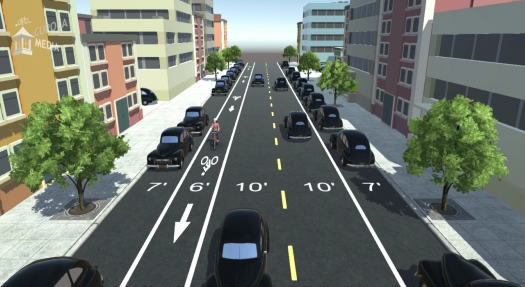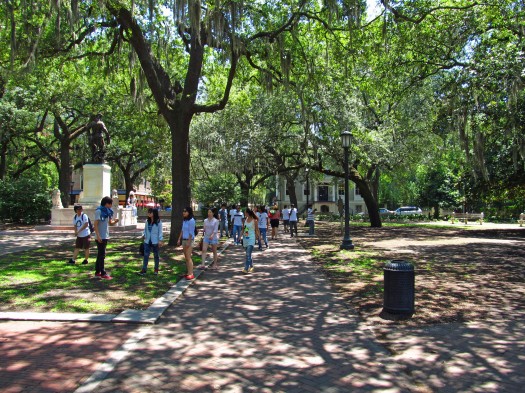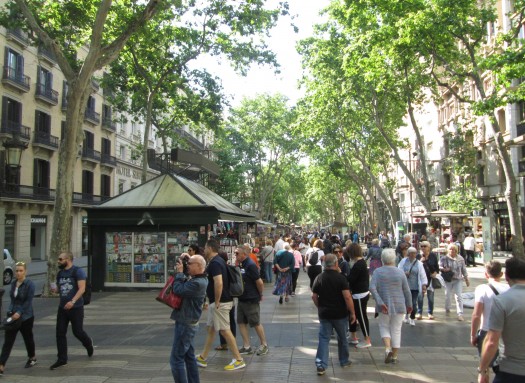A Placemaking Journal
Jeff Speck’s Step-by-Step Guide to Making Better Urban Places
If you are involved in the world of city and neighborhood design, you probably know (or at least have heard of) the work of urban thinker, writer, lecturer, and city planner Jeff Speck. He has authored or coauthored a number of books in the field, my personal favorite being The Smart Growth Manual (2010, coauthored with Andres Duany and Mike Lydon), a basic introduction to the principles of strengthening, building, and designing nonsprawling communities.
That book was followed in 2012 by Walkable City, which I reviewed in The Atlantic Cities (now CityLab) and described as an excellent text designed to motivate city leaders and thinkers to begin making their communities more hospitable to pedestrians. Walkable City was a big hit in urbanist circles, justifiably so. But its scope was limited: it didn’t really attempt to show practitioners in the field how to accomplish its goals. It contained no illustrations and very few examples.
Now Speck is out with a sequel, Walkable City Rules: 101 Steps to Making Better Places, intended to cure those limitations. If the purpose of Walkable City was to tell us why we need to make more people-friendly places, Walkable City Rules is intended to tell us how. To a great extent, it succeeds in its mission.
I absolutely love the format: The book comprises 19 sections or “parts,” each containing some three to seven “rules.” Each section (e.g., “Get the Parking Right”) is introduced briefly, and each of the rules it contains (“Eliminate On-Site Parking Requirements”) is presented in a two-page layout with a headline followed by a narrative explication, an illustration or two, and then a slightly longer and more precise restatement of the rule.
Unlike its predecessor, Walkable City Rules is full of examples and illustrations, including 120 full-color photos and figures. The volume is excellent for browsing and should make a great reference work. Indeed, I would encourage the publisher to follow up with a spiral-bound, loose-leaf edition, because the book would be even more accessible and useful to practitioners if the two-page layout for each rule could be displayed flat.

It should be noted that the book is not modest in ambition:
“Walkable City Rules is designed to be the most comprehensive tool available for bringing the latest and most impactful city planning practices to bear in your community.”
Nor in the author’s assessment of what the book accomplishes:
“You should read this whole book—not because you need to, but because doing so will cause you to understand more about the practical aspects of city planning than 90 percent of the people currently engaged in that work.”
To be honest, I’m not sure I’m sufficiently qualified in the field of city planning to judge whether Walkable City Rules lives up to those lofty claims. But I think they are significant, not because of Speck’s largely justifiable pride in his work but because they signal that, its title notwithstanding, this work is about much more than walkability: it is about, as the subtitle states, “making better places” in a more comprehensive sense. Indeed, some of the discussion that is not about walking directly, such as the very good sections on attainable housing and transit, are among the best in the book.
In the section on attainable housing, for example, Speck comes out firmly (and rightly, in my opinion) in favor of inclusionary zoning, a practice sometimes maligned by otherwise progressive developers; he also supports “housing first” programs to address homelessness and recommends safeguards against displacement of lower-income residents as a neighborhood gentrifies. In a later section, he includes a much-appreciated (if brief) rule supporting preservation of older buildings.
More than anything else, though, this book is a manifesto for reforming urban transportation policy and infrastructure and, within that obviously important and highly relevant subject, about reducing the negative impacts of automobiles on walkability and on our cities. Of the nineteen major sections of Walkable City Rules, eight are devoted directly to cars and driving; over forty of the rules are devoted to the subject, and that doesn’t even include the related sections on transit, bicycling and sidewalks. For example, there are two sections and ten rules devoted just to the number and size of motor vehicle traffic lanes on streets. If you’re looking for ways to slow down the traffic in your city, you will find lots of outstanding information on the subject in this book.

Only one of the nineteen sections is devoted to sidewalks, and it comes near the end. (Bicycling infrastructure actually gets more attention in the book.) But I liked it a lot, especially Speck’s strong advocacy of street trees:
“Among all the hundreds of physical assets that American cities do or don’t invest in, none is as consistently undervalued as street trees. If our leaders were to understand their true worth, street trees would receive many multiples of their current funding. Communicating this worth has to be central to any campaign to improve walkability and urban vitality.”
Speck notes that street trees protect sidewalks, reduce car crashes, shape space, absorb stormwater, absorb pollutants, reduce urban heat islands, improve property values, improve retail viability, and improve public health. I could add even more to that list, but it’s an excellent start.
As strong as Walkable City is with respect to the relationship between motor vehicle traffic and walkability, some of the book’s suggestions will seem counterintuitive to many pedestrians. For example, Speck generally disdains traffic signals on neighborhood streets, preferring stop signs. While I think that’s fine on lightly traveled streets, in my experience as a pedestrian I wish we had a few more signals, not less. I also love the “countdown clocks” at crosswalks that tell me exactly how much time I have to cross the street; Speck would do away with them (because motorists can see and use them, too). He also writes that confusing intersections may be safer than straightforward ones; when I’m out walking, which is basically every single day, I like predictability, not confusion. These are perhaps minor quibbles, given the book’s overall excellence in discussing street design and measures to make walking feel safer from speeding or wayward motorists.
To the extent I have other issues with Walkable City Rules, it is perhaps an indication of how much I liked its handling of subjects it emphasizes that I only wish it had discussed some issues that it doesn’t, or that it mentions only in passing. The most notable omission (and I had the same misgiving with respect to the author’s previous book, Walkable City) is the new book’s relative inattention to the considerable contribution that city nature (beyond just street trees) can make to encouraging walking and to making cities more delightful.

My colleagues at PlaceMakers and I have written extensively on the subject (see, for example, the discussion, research, and links in this recent article). The key to integrating nature into walkable cities, of course, is to do so in a way that enhances rather than conflicts with walkability and urbanity. Almost all of us have a favorite city park or three that does exactly that beautifully, though, and parks are just the beginning when it comes to the ways we can enjoy nature in urban neighborhoods. Add green city squares, community gardens, living walls, fountains, green streets, and even window boxes, and in my opinion you’ll have a more walkable and lovable city than if you don’t.
Walkable City Rules does include the discussion of street trees, and even a rule headlined “push for local parks.” But the latter really only advocates sports facilities and playgrounds, not other kinds of parks. And there are a couple of parks cited and one shown in the very last rule (“Dream Big”), as examples of undertakings by visionary mayors. I just wish this issue had been highlighted with discussion, not just mention.
Other topics I would have liked to see in a work as ambitious as this include the effect of street crime (or worry about street crime) on walkability, how the shrinkage of in-person retail may be affecting otherwise walkable urban streetscapes, and what to do about the regressive nature of the parking and congestion pricing that Speck advocates. I have a feeling that this book, like its predecessor, is going to have staying power; maybe additional topics not thoroughly covered in this edition could be included in a later one.
All told, Walkable City Rules is a very good book, one I expect to return to often, especially when I want to be refreshed on the intricacies of roadway design and taming the automobile in urban environments. Speck is absolutely right in his belief (articulated in the book’s first five rules) that walkability is good for the economy, good for health, helpful in addressing climate change, helpful in addressing social equity, and good for strengthening community bonds. Walkable cities are better cities and, if your city follows these prescriptions, its work in creating a better habitat for people won’t be finished, but it would be off to a heck of a start.
–Kaid Benfield
If PlaceShakers is our soapbox, our Facebook page is where we step down, grab a drink and enjoy a little conversation. Looking for a heads-up on the latest community-building news and perspective from around the web? Click through and “Like” us and we’ll keep you in the loop.











